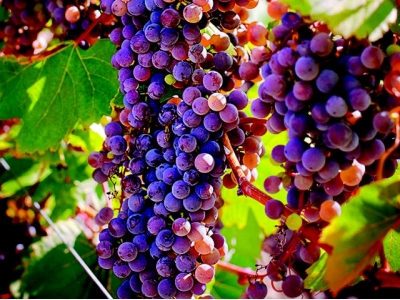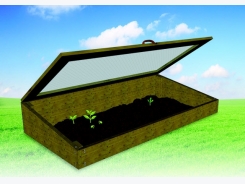Cropped: How to Grow Cold-Hardy Wine Grapes

Photography by Sherry Galey
Growing wine grapes remained a dream for cold climate farmers until amateur botanist Elmer Swenson turned viticulture upside down in the 1970s, when he debuted ‘Swenson Red’ in partnership with the University of Minnesota.
Other plant breeders followed suit, and today there are a number of varieties hardy to Zones 5, 4, and even 3. Now’s the time to plant bare-root vines, but be forewarned: You won’t pick a single grape for three years, and four will pass before you see a robust harvest. Once established, though, vines will bear fruit for at least three decades.
Planting
As soon as all danger of frost has passed, plant the bareroot vines in 4- to 6-inch-tall mounds of soil. Space the vines 4 to 6 feet apart in rows 7 to 8 feet apart.
Cold-hardy grapes grow best in sandy or gravelly soils with a pH of 5.5 (about 0.5 to 1 point lower than conventional Vitis vinifera varieties). Have the soil tested and, if necessary, amend it with bonemeal and organic 10-10-10.
For a simple trellising system, sink heavy wood or metal posts about 20 feet apart along each row, and stretch 12.5-gauge wire horizontally between the posts, 2 feet above the ground.
Then stretch 15-gauge wire parallel to, and 12 to 18 inches above, the 12.5-gauge wire.

Care
The first three years of attentive pruning and training will ensure success: During year one, choose two dominant shoots and remove the rest. Continue clipping lateral shoots through the growing season, but don’t touch any of the leafy growth on the leaders. The next year, select the strongest leader and tie it to the top wire. Allow two strong lateral shoots to grow, trained to the top wire, and remove all others. In year three, prune some buds from the upper vines, allowing one every 6 to 8 inches, and train two lower buds to the bottom wire.
Keep an eye out for pests. Grape phylloxera form galls (abnormal growths) on the leaves. Diligent cleanup and disposal of fallen leaves can help keep the aphidlike bugs at bay. Remove Japanese beetles, which can skeletonize grape leaves, by hand in the early morning. If more than 15 percent of the leaves are damaged by beetles, dust the insects with the organic pesticide pyrethrin.
Harvest
Most cold-hardy grapes are ready for harvest in late September or early October, when the fruit softens as it becomes ripe and pulls away from the stems cleanly. Or, determine ripeness with a refractometer, a simple field instrument available at farm-supply stores that measures sugar density (it should read between 20 and 28 on the Brix scale, depending on the style of wine). Come harvest, hire at least 10 helpers to get through one acre at the proper speed. The window proves small, and a leisurely picking won’t do.
Cold-Hardy Varieties
- Frontenac Zones 3-8; makes rosé, red, or port.
- Frontenac Blanc Zones 3-8; makes very light white wine.
- LaCrescent Zones 3-8; makes sweet wine with apricot and honey aromas.
- St. Croix Zones 4-8; makes a wine similar to light Burgundy. Harvest starts early, in mid-August.
- Swenson Red Zones 4-8; ferment without skins to make a floral white wine. Harvest starts early, in mid-September.
Related news
Tools

Phối trộn thức ăn chăn nuôi

Pha dung dịch thủy canh

Định mức cho tôm ăn

Phối trộn phân bón NPK

Xác định tỷ lệ tôm sống

Chuyển đổi đơn vị phân bón

Xác định công suất sục khí

Chuyển đổi đơn vị tôm

Tính diện tích nhà kính

Tính thể tích ao



 7 Perennial Herbs to Plant Now
7 Perennial Herbs to Plant Now  5 of the Most Valuable Crops You Can…
5 of the Most Valuable Crops You Can…